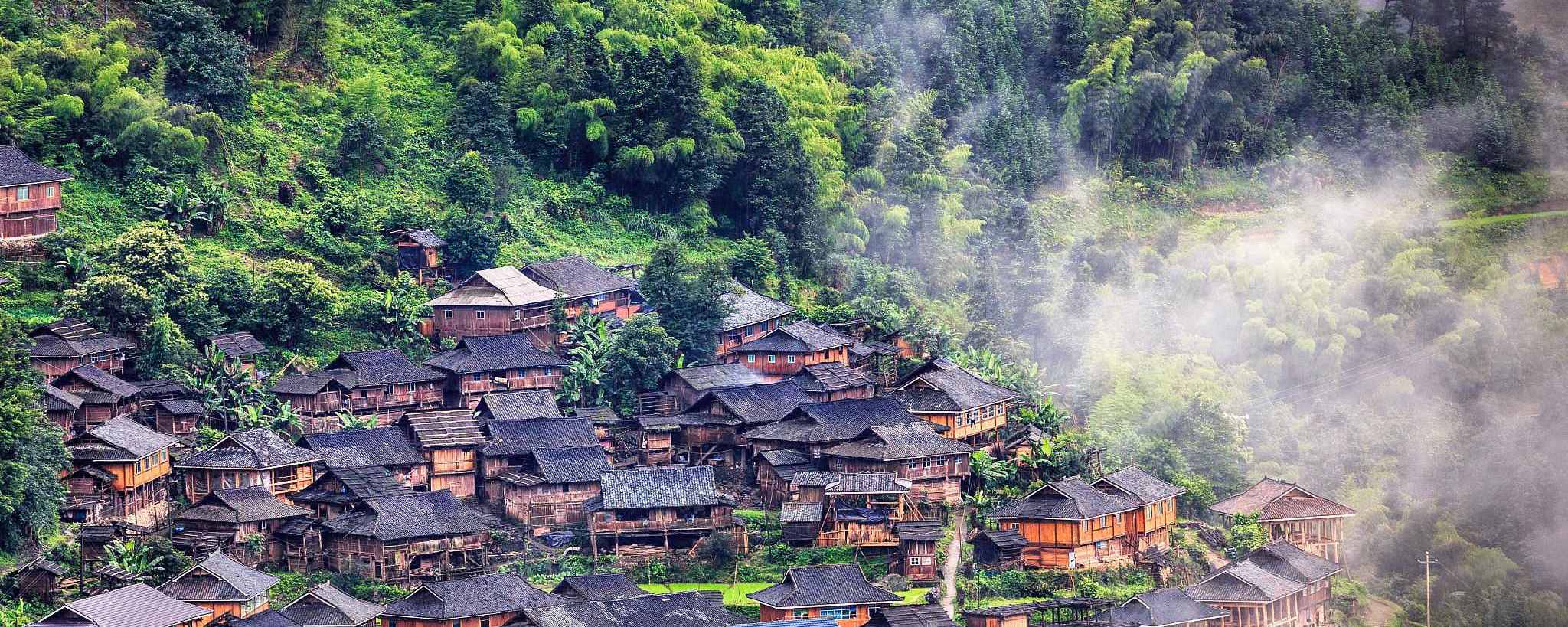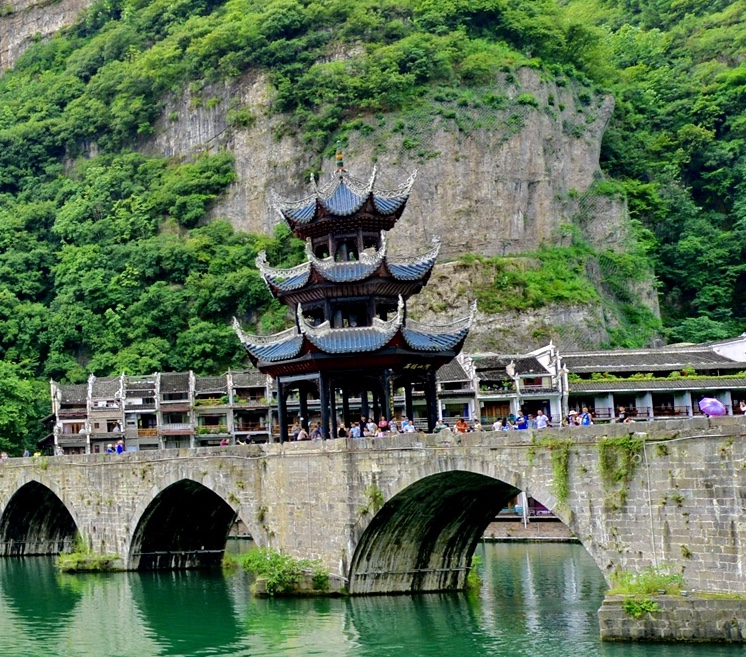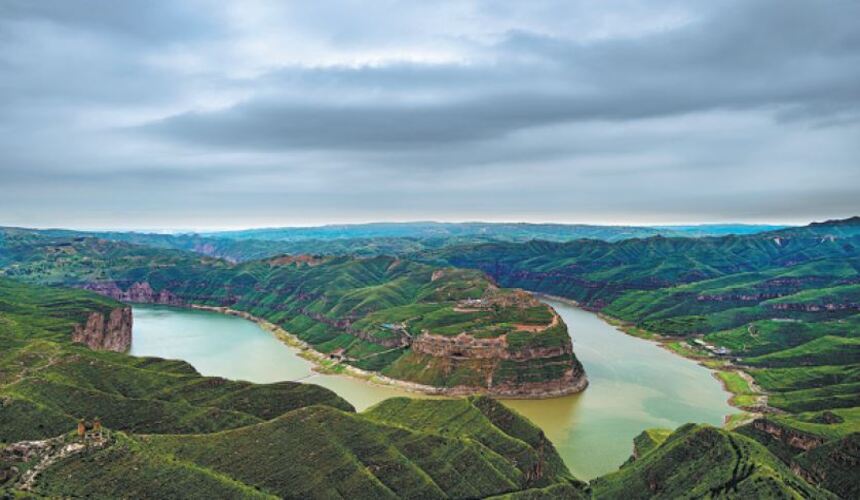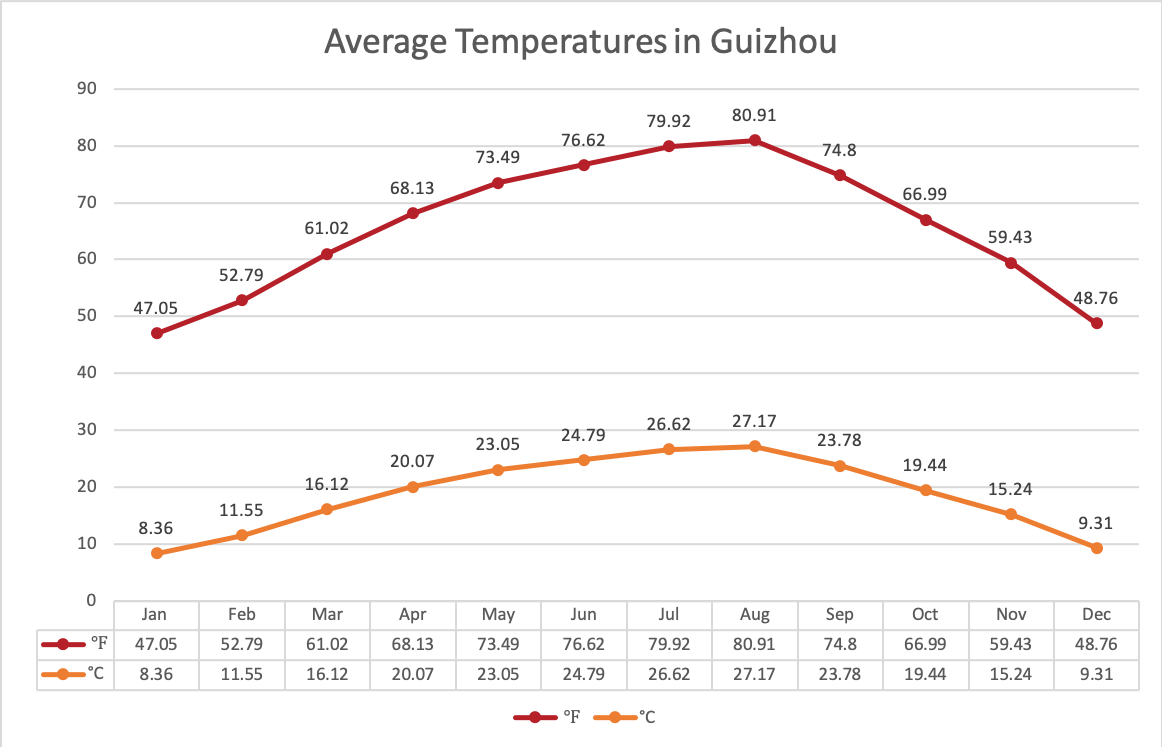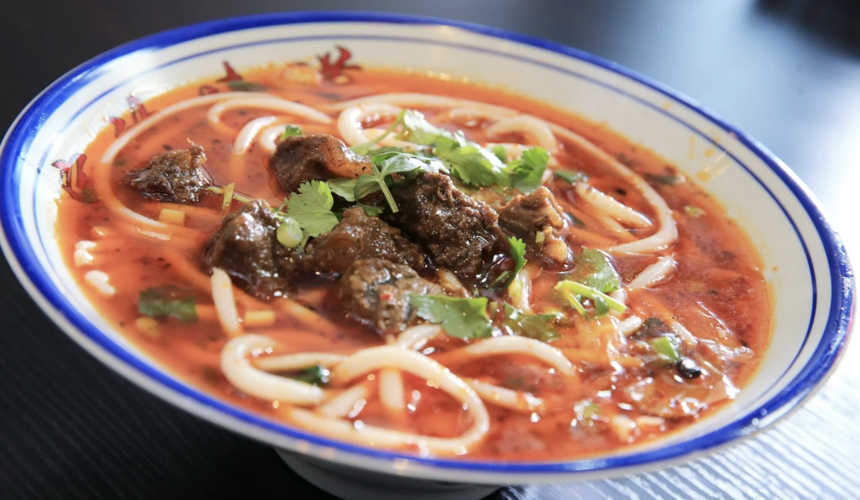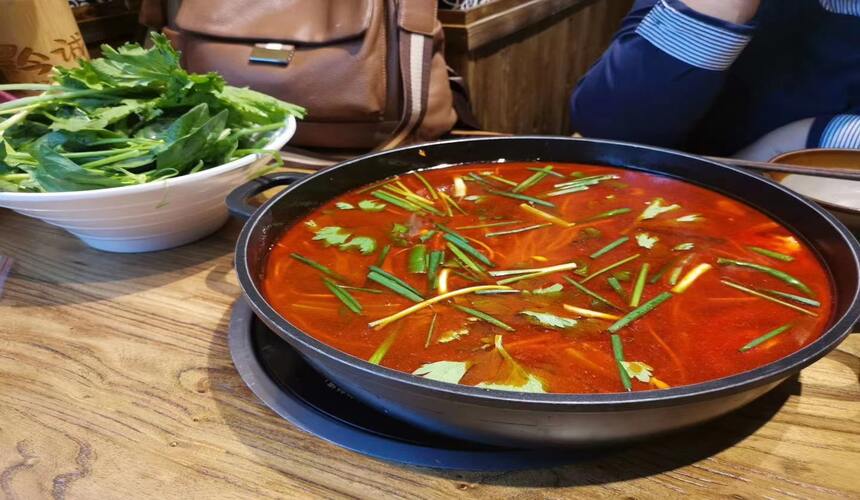Rich ethnic culture of groups
If you want to discover a glimpse of real China, then come to Guizhou. This province resides in the southwest of China, with a multi-minority ethnic culture of groups. The remote land might be poor in undeveloped transportation but it is still rich in wonderful hills, valleys and waters. China’s largest waterfall, Huangguoshu, excellent underground karst cave, Dragon Palace Cave and gorgeous natural reserve, Caohai Lake are some natural attractions to see around while experiencing the mysterious unique customs and traditional living standards of the local folks in Kaili. Get a sight of the villages with people wearing their traditional costumes and performing traditional dances, where dozens of ethnic minorities still follow old traditions passed down through generations.
Guizhou has a subtropical humid monsoon climate with little temperature variation, characterized by warm winters and cool summers. In January, the average temperature in Guizhou is typically between 3°C and 6°C, which is higher than other regions at the same latitude. In July, the average temperature is generally between 22°C and 25°C, making it a cool summer area. The annual average temperature in Guizhou is around 15°C. Guizhou Province receives an annual rainfall of approximately 1197mm during its rainy season from March to August, which is characterized by increased precipitation, cloudy days, and reduced sunshine.
Despite the weather conditions, Guizhou’s pleasant climate makes it an ideal destination for year-round visits. The natural scenery is particularly stunning during the summer and autumn months when the weather is warmer, and the precipitation is higher. During this time, the rivers swell, making it the perfect time to admire the magnificent Huangguoshu Waterfall in Guizhou.Hiking to Fanjingshan, a holy site, is a great way to escape the summer heat of big cities. If you’re interested in ethnic customs, visit southeast Guizhou during the spring and winter when many local festivals are celebrated. Explore the primitive ethnic Miao and Dong villages in Kaili, Rongjiang, and Congjiang. Then, extend your adventure to the thousand-year-old Zhenyuan Ancient Town to enjoy the architecture and folk houses there.
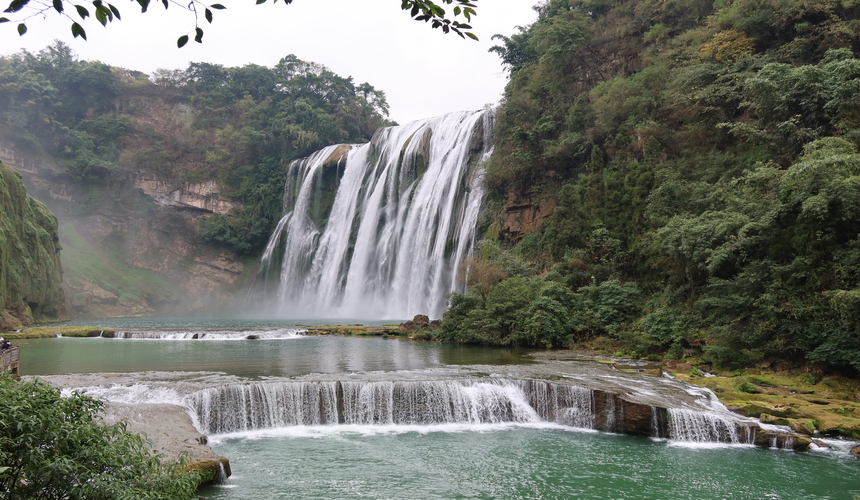
Huangguoshu Falls
Huangguoshu Falls<br /> The Huangguoshu waterfall is China's largest waterfall and is a popular destination for domestic travellers. It measures 77.8m tall and 81m wide, making it Guizhou's top natural attraction. From June to October, the falls produce a deafening roar and create rainbows from the mist that dance around Rhinoceros Pool. Visitors should not miss the opportunity to explore the 134m-long Water Curtain Cave, a natural corridor in the rock face that is dripping with water.
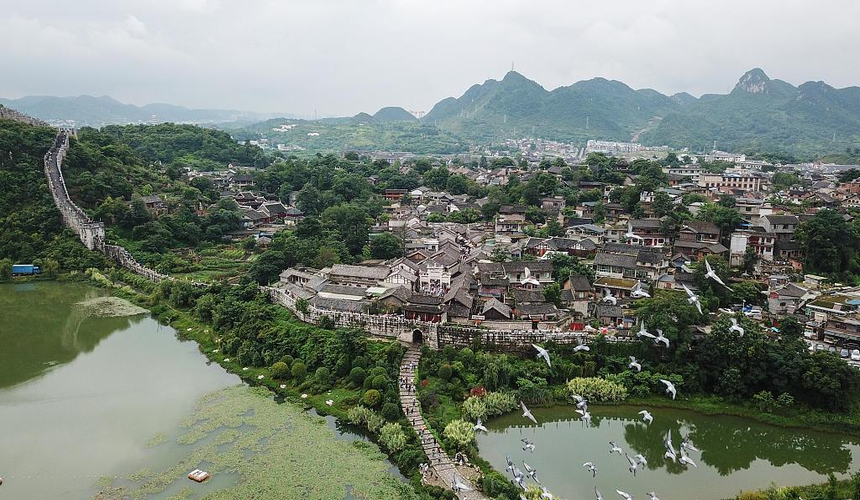
Qingyan Ancient Town
Qingyan, an ancient town in Guiyang, southwest China's Guizhou Province, was a military fort during the early Ming Dynasty (1368-1644). It is considered one of the most charming towns in China and was listed as a national historical and cultural town in 2005. Qingyan features well-preserved buildings from the Ming and Qing (1644-1911) dynasties, ancient city walls, stone memorial archways, and temples.
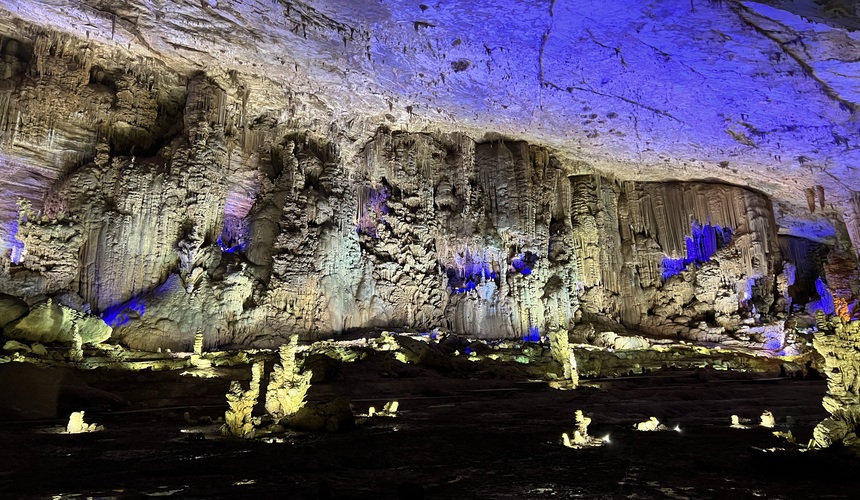
Zhijin Cave
This cave, which is 10km long, is the largest in the country. It is a must-visit for both experienced spelunkers and tourists who appreciate underground beauty. The cave features pockets that open up to 150m high, revealing Zhijin's organic splendour that twists upward like a stone forest. The tour covers 6km of the cave, including steep and slippery steps. English captions are available at the main points along the way.

Wanfenglin Scenic Area
The Wanfenglin Scenic Area boasts karst hills that resemble the knobbly back of a sleeping dragon. The hills are surrounded by charming villages, carefully tended rice paddies, and winding rivers lined with banana trees. In February and March, golden rape flowers carpet the ground between the peaks. In summer, purple azalea flowers punctuate the endless green.The highlights of Guizhou include the Upper and Lower Nahui villages located by the riverside, which are inhabited by the Buyi ethnic minority. Additionally, the Wanfo Temple built into a karst hillside is a spectacular sight.

Libo Seven Small Arches Scenic Area
Seven Small Arches is a UNESCO World Heritage Site. Fantastic natural scenery of 68 levels of waterfalls, primitive forest, emerald lakes and ancient seven arches bridges combining together, forms a super bonsai! Different from Seven Small Arches Scenic Area, the natural scenery in Daqikong Scenic Area is steeper but magnificent. It is famous for Daqikong Bridge, Dream Pond, and Evil Wind Cave.
Guizhou cuisine is renowned for its delectable signature spicy and sour dishes, which locals enjoy with the local liquor, such as Maotai. This style of cuisine is known for its use of pickled, salty vegetables called yancai, which can be made from various vegetables. These vegetables are dried immediately after being harvested, without any exposure to sunlight. Once dried, they are placed in containers, salted, sealed, and left to ferment for four to five days before they are ready to be consumed. These pickled foods are not only delicious but also believed to have medicinal properties. Guizhou cuisine is also known for its generous use of dried red chillies and salty chilli dips.
Must-try: Guizhou Hotpot, Sour Soup Fish, Crackling Fish with Zao Pepper, Gongbao Chicken or Kungpao Chicken, Huaxi Beef Rice Noodles.
Air
Travellers who prefer to fly to Guizhou are mainly recommended to use Guiyang airport, the largest in the province. Although there are 10 other airports scattered throughout Tongren, Anshun, Kaili, Libo, Xingyi, and Zunyi, they offer fewer flights. Guiyang is the most convenient city for accessing Guizhou by air. Guiyang Longdongbao International Airport is the largest airport in this province, with flights to over 70 domestic cities, including Beijing (3 hours), Shanghai (2 hours 40 minutes), Hong Kong (2 hours), Xian (1 hour 50 minutes), Guangzhou (1.5 hours), Chengdu (1.5 hours), Hangzhou (2 hours 40 minutes), Zhengzhou, Xiamen, Nanjing, and Tianjin. Additionally, there are around 20 international routes to countries such as Japan, South Korea, Singapore, Thailand, and Malaysia.
Train
Travelling to Guizhou by train, especially by bullet train, has become a new and convenient option in recent years. There are three main railway routes connecting major destinations in Guizhou with Guangzhou, Guilin, Chongqing, Chengdu, Kunming, Lijiang, and other cities, namely Guiyang-Guangzhou, Shanghai-Kunming, and Chongqing-Guiyang. The railways offer both speed and scenic views on the way. Additionally, they provide connections to other major cities such as Beijing, Shanghai, Hangzhou, and Wuhan.


